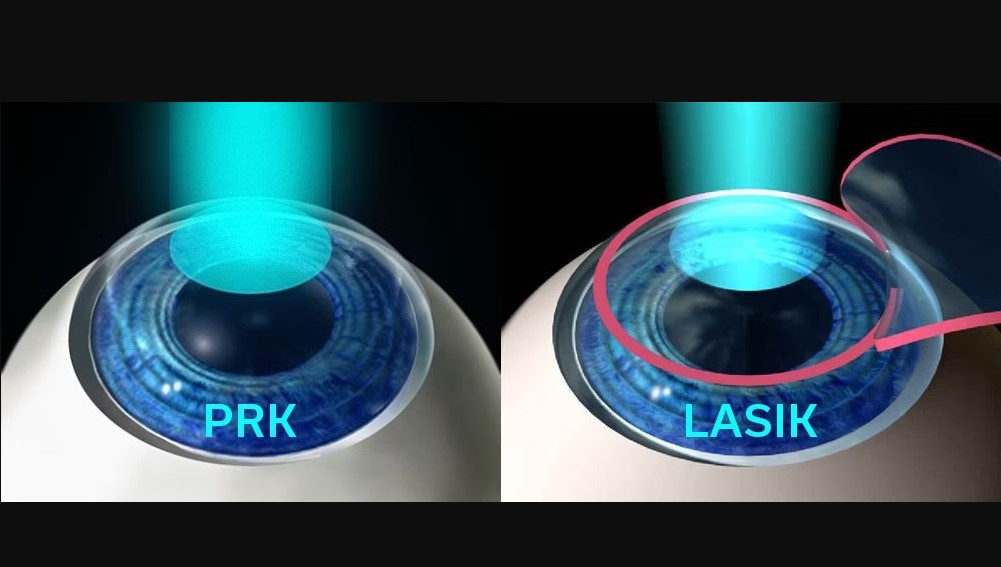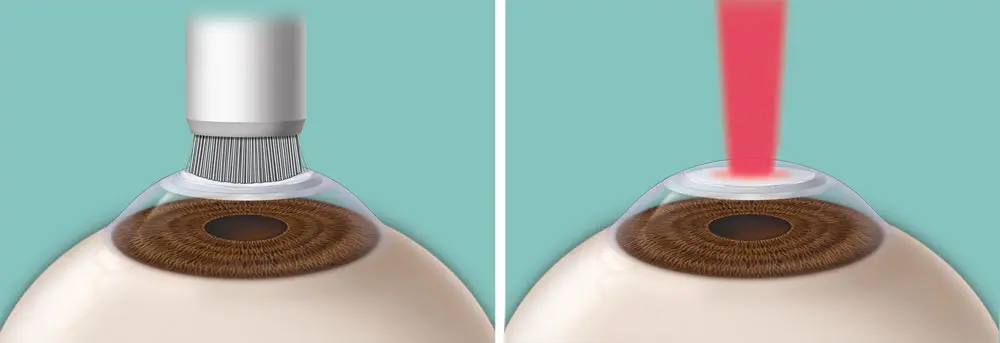There are different refractive surgeries that are applied to eliminate refractive errors and help the person regain a healthy, clear vision. Different factors such as the advantages they provide and the suitability of the person’s eye condition directly affect the determination of the method. PRK laser eye surgery is one of these methods, which is frequently preferred for its advantages. What are the differences in this method, which is frequently preferred especially for patients with an active life? Who is the application suitable for? What are its advantages and disadvantages? Let’s look for answers to all these questions.
What is PRK Laser?
PRK, which stands for PhotoRefractive Keratectomy, is a refractive surgery performed to treat refractive errors such as myopia, astigmatism and hyperopia. In the method, the outermost layer of the eye, the cornea, is reshaped with a laser and refractive errors are eliminated.
Thus, patients regain clear vision and undergo a rapid recovery process. We can say that it is an effective treatment to reduce or completely eliminate the need for glasses and contact lenses. In order to better understand the treatment and to convey its differences, we need to talk about the operation during surgery.
Understanding Whether the Patient is Suitable: Who is PRK Suitable for?
We will move on to the surgery stage, but first I want to start from the beginning, because it is not possible for every patient to have PRK. First, this process must be completed and the patient must be evaluated. Here we can say that there is a triple staging for suitability.
- Vision Test Phase: Here the level of your vision is determined. What is your refractive error? How much correction is required with laser surgery? All these are checked during the vision test and it is determined whether you are suitable for the operation.
- Checking Eye Problems Phase: Let’s say you have passed the first stage and your refractive error number is appropriate. In this case, the second stage will be started and it will be evaluated whether there is any other defect in your eye. If there is another condition in your eye that will prevent surgery, this condition must be cured first. If there is a permanent problem and this prevents the laser, then the method is not suitable for you.
- Corneal Measurements Phase: Your cornea is mapped and the corneal thickness is checked. It is checked whether you are suitable for PRK. The measurements are also used to program the laser to be used during the surgery, so they are of vital importance.
When it comes to who the surgery is more suitable and preferred, we can talk about two main topics here. First, corneal thickness. We can see that PRK laser surgery is preferred more often in patients with thinner corneas and patients who are more likely to experience eye trauma. The main reason for this is that the cornea is not intervened too much and there is no additional certainty in the eye.
How is PRK Laser Surgery Performed?
Let’s talk about how to proceed during the procedure. This is the part that patients who will have surgery are most curious about. I would like to list the surgery in the form of functional stages.
- Preparation of the Eye: Before the surgery, your eye is made ready for this process. First of all, the eye is numbed with eye drops and you are not allowed to feel pain. Afterwards, a holder is placed on your eyelid to prevent you from blinking and fixation is done.
- Stage Start of the Operation: First, your doctor cleans the thin membrane epithelial tissue on the outermost part of the eye. A special brushing or a special solution can be used for this.
- Stage Laser Application: The laser prepared with the measurements taken for your eye is used and the process of reshaping the cornea of your eye is completed. At this stage, you can hear the working sounds of the instrument and you may feel a sound similar to a clicking sound in your eye.
The operation will be completed after these steps. You do not need to worry because PRK laser surgery does not take long. All these steps will be completed within 15-20 minutes.
What is the Recovery Process After PRK Surgery?
You cannot gain a clear vision immediately after the surgery. It is necessary to say that there is a healing process. Here we can quickly discuss the healing process into items.
- Immediately after the surgery, a bandage is applied to protect your eye.,
- You need to get plenty of rest after this process.
- You may experience pain or stinging sensation in your eye within 2-3 days following the surgery. It is important to remember that this is a temporary effect. The pain will decrease over time. It is also important to continue using the medications recommended by your ophthalmologist during this period.
- It should also be noted that after PRK, you should take care not to go out without protective glasses for the period specified by the doctor.
How Long Does Blurriness Last After PRK Laser?
This is one of the most common questions about the healing process. During the 5-day period following the surgery, there may be minor defects in your vision. Your vision will gradually improve. The epithelial tissue removed during the procedure is regenerated by the eye itself. After 3-5 days, the blurred vision problem will disappear and you will gradually start to have clear vision. However, keep in mind that it may take a few weeks before you can see clearly. If long-term blurred vision problems persist, you should definitely consult your doctor.

Advantages of Treatment
- For patients who will prefer PRK, we need to consider the advantages and disadvantages separately. These can also be effective in decision-making. Let’s start with the advantages first.
- It can be applied to patients with thin corneas. This is a great advantage for patients who are not suitable for LASIK.
- Since no flap is created, the structural integrity of the cornea is not damaged. Thus, the risks against damage to the cornea are minimized.
- Since the flap is not opened, complications that may occur due to this are also prevented.
- Less risk of dry eye.
Disadvantages of Treatment
- The corneal surface needs to be protected during the healing process. It may be necessary to wear bandage contact lenses for this purpose.
- Burning, stinging sensation and sensitivity to light may occur. We can say that this is usually temporary. The healing process is a bit longer compared to LASIK.
- PRK and Dry Eye Risk
As we said in the advantages section, when PRK is compared with LASIK, we can say that the risk of dry eye is lower in the PRK method. However, there is a certain level of dry eye risk during laser surgeries. To minimize this risk and generally prepare the eye for surgery by making it as stable as possible, solutions such as LaserPrimeCare can be preferred.
LaserPrimeCare is one of the approaches to minimize complications by optimizing the surface of the eye. For more information, please visit the link here.


